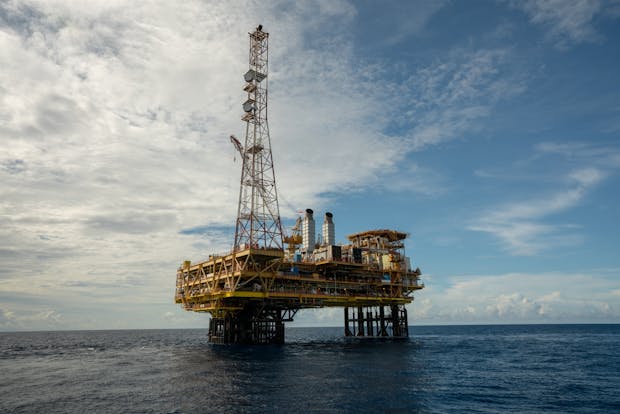oil is slipperier than usual. why?

oil is slipperier than usual. why?
oil is slipperier than usual. why?
it is oil that drives the world. at least for now, a major component of prices in most national economies is the cost of energy. most countries’ energy sources are fossil fuels. they need to keep a very close eye on the price of oil because it can make or mar their finances. governments subsidize fuel prices for citizens but that only means part of the bill is paid by someone else, often taxpayers. India is a classic example.
petrol has crossed ₹100 per litre in most Indian cities. the base retail price of the fuel at the pump is less than ₹40 per litre in Delhi where the fuel is among the cheapest in the country. the base price is a function of the actual price at which crude oil producers supply to the international market, the margins of refiners and the cost of transport. the rest are state and central levies.
oil prices had stayed low for a long time and plummeted when the pandemic began. as economies began to recover, the prices began to swing. it has gone from $76 per barrel to $73 per barrel to $67 per barrel and then to ~$70 per barrel, WTI all since July 14.
this is not normal. there are two reasons why oil has decided to ride the rollercoaster: the pandemic and the international cartel of oil producers called the Organization of Petroleum Exporting Countries (OPEC).
the pandemic
The OPEC are joined in these negotiations by another set of countries who are outside the grouping but act together with the cartel. this expanded group is called OPEC+ and includes other big producers such as Russia, Sudan, Brunei and Mexico. last year, in April, when the world came to a stop, producers stopped pumping oil to adjust for vanishing demand. prices languished at historic lows until economies started opening up.
one year later, the game changed. while India battled the deadly second wave, other parts of the world started to open up. people started driving and flying. manufacturers shipped goods across the world with fewer restrictions. while demand increased from April through to July, supply didn’t keep up and so there was a sharp increase in prices. in July, the cartel met to figure out production quotas to keep with demand. but then things changed.
the big OPEC fight
two weeks ago, a spat between Saudi Arabia, the de facto leader of the cartel, and the UAE over production quotas spilled out into the public domain. Saudi Arabia wanted to gradually increase production by two million barrels per day and let the new quotas remain until the end of 2022. but the UAE wanted the output curbs to go in April.
why? let’s take a step back and analyse how this process works in the first place.
the economies of producer nations and the wealth of their elites (read: the rich sheikhs of Arabia and billionaire Russian oligarchs) who control the fields have been weaned on petrodollars for decades. when they decide to raise production, there is a glut in the market and the price drops. when they stop pumping from their wells, the price shoots up. these countries often fight over the quotas as that determines how much money each will make. in 2019 Russia and Saudi Arabia competed with one another to raise production bringing down prices. competitively pumping out crude hurts everyone.
now, the UAE is trying to diversify its economy and wants to sell more oil to raise money for investments. after all, the more you produce, the more you earn. but if the UAE broke away and started pumping more oil, others may have followed suit leading to a supply glut crashing prices and hurting everyone. in fact, it dropped $1 almost overnight.
another swing
the UAE finally decided to agree with its neighbour. Russia, the leader of the non-OPEC producers, agreed as well. prices stabilized immediately. banks have indicated that oil supply will remain tight despite the resolution, which means that the prices will rise. the prices are expected to stabilise only by the first quarter of 2022. add to this the world opening up, oil prices will certainly be caught in the updraft. there is a chance your petrol prices will not let up just yet either.



